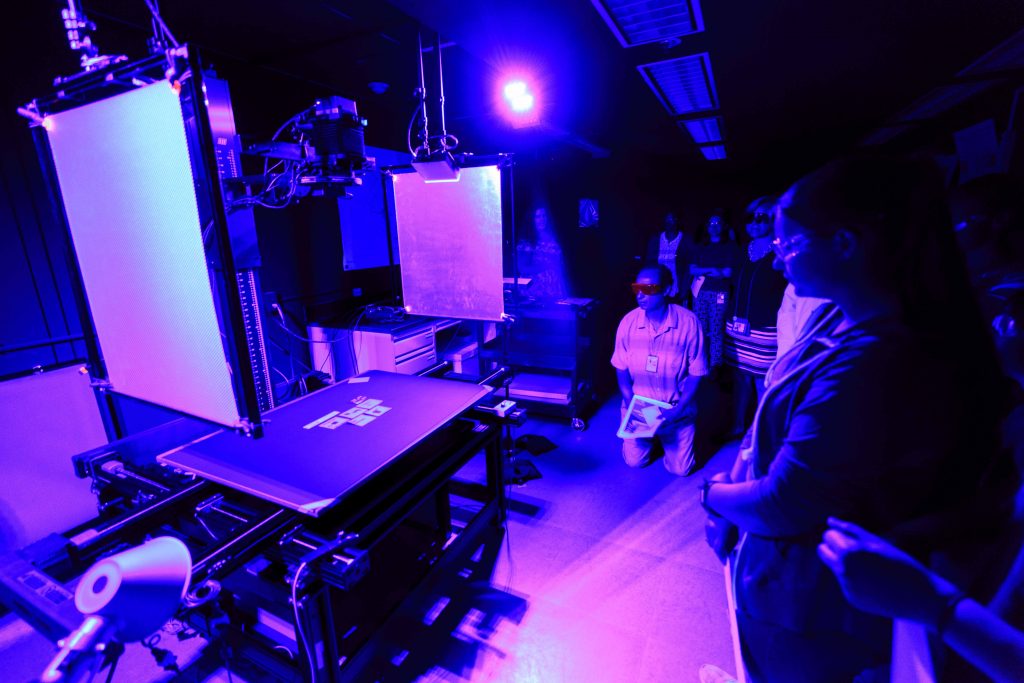Photo by Shawn Miller.
Middle- and high-school students visited the Library’s Preservation Research and Testing Division on May 9 as part of hands-on pilot program focusing on preservation science. Here, alongside Library scientists, the students use the Library’s hyperspectral camera system to discover concealed writing in documents.
For the past decade, the Library has relied on increasingly sophisticated hyperspectral imaging technology to elicit a trove of information the human eye cannot detect from manuscripts, maps and other artifacts. Imaging involves digitally photographing an object at multiple wavelengths spanning the ultraviolet through the visible and into the near-infrared. Discrete components in an object—inks, glues, parchment—respond in unique ways to the different wavelengths. So at one wavelength, one ink may almost melt away, revealing another ink below.
The Preservation Research and Testing Division is conducting its pilot with the Library’s Educational Outreach Office. The goal is to introduce students to preservation science and its importance to protecting cultural and historical heritage within the Library’s collections. In the fall, the program will be offered on a monthly basis.
For the story behind how the Library used hyperspectral imaging to detect hidden text in a 1780 love letter from early American statesman Alexander Hamilton to his future wife, Elizabeth Schuyler, read this blog post.

















